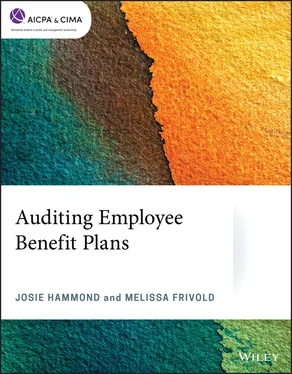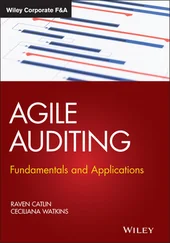Financial statements are considered issued when they are widely distributed to shareholders and other financial statement users for “general use and reliance” in a form and format that complies with generally accepted accounting principles. Further, financial statements are considered available to be issued when they are complete, which means that they are in a form and format that complies with generally accepted accounting principles, and all approvals necessary for issuance have been obtained.
Entities [except SEC filers and conduit debt obligors (CDOs)] should evaluate subsequent events through the date that the financial statements are available to be issued. SEC filers and CDOs should evaluate subsequent events through the date the financial statements are issued. Entities other than SEC filers should disclose both the date through which subsequent events have been evaluated and whether that date is the “issued” date or “available to be issued” date.
1 FASB ASC 855 requires disclosure in the financial statements of the date through which an entity has evaluated subsequent events and the basis for that date. Which of the following is not considered “issued” or “available to be issued”?When a significant portion of the audit work is complete.Widely distributed to shareholders and other financial statement users for “general use and reliance.”All approvals necessary for issuance have been obtained.When financial statements are complete.
Readers are encouraged to consult the full text of the ASU on FASB’s website at www.fasb.org.
FASB ASU No. 2016-01
In January 2016, FASB issued ASU No. 2016-01, Financial Instruments-Overall (Subtopic 825-10): Recognition and Measurement of Financial Assets and Financial Liabilities.
These amendments in this Update provide guidance for measuring and recording fair value of equity investments, eliminate some disclosure requirements for financial instruments measured at amortized cost, simplify impairment assessment of equity investments, and clarify some disclosure requirements.
ASU 2016-01 is effective for public business entities for fiscal years beginning after December 15, 2017, including interim periods within those fiscal years. For all other entities, including not-for-profit entities and employee benefit plans within the scope of FASB ASC 960, 962, and 965, the amendments are effective for fiscal years beginning after December 15, 2018, and interim periods within fiscal years beginning after December 15, 2019. All entities that are not public business entities may adopt the amendments in this ASU earlier as of the fiscal years beginning after December 15, 2017, including interim periods within those fiscal years. Otherwise early adoption is limited to specific amendments, available only under certain conditions and subject to specific early adoption guidance.
FASB ASU No. 2018-03
In February 2018, FASB issued FASB ASU No. 2018-03, Technical Corrections and Improvements to Financial Instruments—Overall (Subtopic 825-10): Recognition and Measurement of Financial Assets and Financial Liabilities.
This update was issued to clarify certain aspects of the guidance issued in ASU No. 2016-01. To provide a period of time to allow entities to continue their current adoption plans for ASU No. 2016-01, FASB concluded that for public business entities the amendments in FASB ASU No. 2018-03 are effective for fiscal years beginning after December 15, 2017, and interim periods within those fiscal years beginning after June 15, 2018. Public business entities with fiscal years beginning between December 15, 2017, and June 15, 2018, are not required to adopt these amendments until the interim period beginning after June 15, 2018, and public business entities with fiscal years beginning between June 15, 2018, and December 15, 2018, are not required to adopt these amendments before adopting the amendments in ASU No. 2016-01. For all other entities, the effective date is the same as the effective date in ASU No. 2016-01. All entities may early adopt these amendments for fiscal years beginning after December 15, 2017, including interim periods within those fiscal years, as long as they have adopted ASU No. 2016-01 Readers are encouraged to consult the full text of FASB ASU No. 2016-01and ASU No. 2018-03 on FASB’s website at www.fasb.org.
Definition of nonpublic entity
FASB issued ASU No. 2013-12, Definition of a Public Business Entity: An Addition to the Master Glossary . This update amends the Master Glossary of the FASB ASC to include one definition of public business entity for future use in GAAP. An assessment of whether an organization is a public business entity is based on meeting any one of several criteria including whether the entity is required to file or furnish financial statements (including voluntary filers) with the SEC, or has securities that are traded, listed, or quoted on an exchange or an OTC market.
In addition, the new definition excluded employee benefit plans within the scope of FASB ASC 960 through 965 on plan accounting.
A nonpublic entity is currently defined by the FASB ASC glossary (as related to FASB ASC 820) as an entity that does not meet any of the following conditions:
1 Its debt or equity securities trade in a public market either on a stock exchange (domestic or foreign) or in an over-the-counter market, including securities quoted only locally or regionally.
2 It is a conduit bond obligor for conduit debt securities that are traded in a public market (a domestic or foreign stock exchange or an over-the-counter market, including local or regional markets).
3 It files with a regulatory agency in preparation for the sale of any class of debt or equity securities in a public market.
4 It is required to file or furnish financial statements with the Securities and Exchange Commission.
5 It is controlled by an entity covered by criteria (a) through ( d ) .
Under the existing definition, a benefit plan controlled by a public sponsor (even if the plan itself does not file a Form 11-K) might be considered public for purposes of the public entity disclosures.
The FASB Private Company Council decided not to amend the existing definitions of a nonpublic entity at this time. The existing definitions will remain in the FASB ASC until potentially amended at a later date by FASB.
Help desk.Subsequent to the issuance of this ASU, the term public business entity has been used to establish effective dates and disclosure requirements. This has created attention to the definition of a public business entity that had not previously existed. Therefore, in October 2017, the AICPA issued Technical Question and Answer sections 7100.01–7100.16, which address questions regarding the definition of a public business entity.
Plan accounting: Master trust reporting—FASB ASU No. 2017-06
In February 2017, FASB issued ASU No. 2017-06, Plan Accounting: Defined Benefit Pension Plans (Topic 960); Defined Contribution Pension Plans (Topic 962); Health and Welfare Benefit Plans (Topic 965): Employee Benefit Plan Master Trust Reporting .
This ASU includes the following changes reporting and disclosure requirements for plans with master trusts:
All plans should present their interest in the master trust and change in interest in the master trust as single line items in the statement of net assets available for benefits and the statement of changes in net assets available for benefits.
All plans should provide the dollar amount of the plan’s interest in each general type of investment held by the master trust, which would supplement the existing GAAP requirement for a plan to disclose the master trust’s balances in each of those investments, by general type.
Читать дальше











